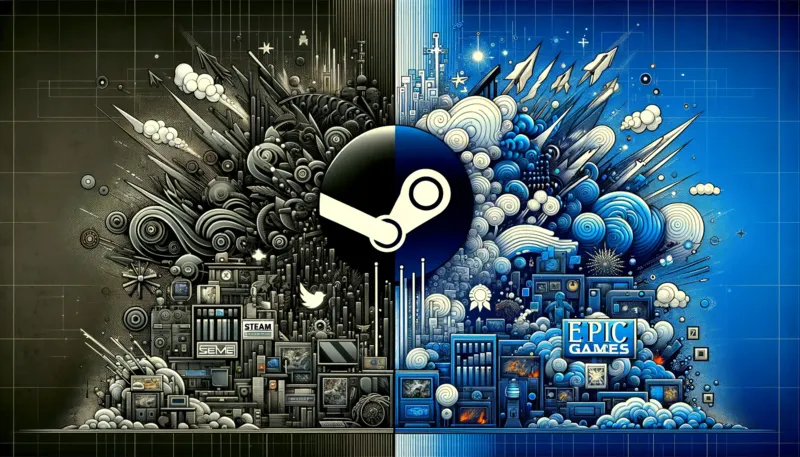Steam vs. Epic Store: The Battle of PC Game Publishers

The digital gaming marketplace has been a battleground for major platforms, with Steam and Epic Games Store emerging as the primary contenders. Each platform offers unique features, advantages, and challenges for both game developers and gamers. In this article, we will explore these two giants in the PC gaming world, providing insights to help you understand where each platform stands.
Introduction to Steam and Epic Games Store
Steam, a pioneer in digital game distribution, was launched by Valve Corporation in 2003. It is recognized as the most established platform in the PC gaming world, offering a vast array of games and serving as a comprehensive hub for social interaction, game streaming, and more.
On the other hand, the Epic Games Store, launched in December 2018 by Epic Games (creators of Fortnite and Unreal Engine), has rapidly become a formidable competitor. Despite its relative newness, it has quickly gained traction in the gaming community, focusing on a wide variety of games and social features.
Userbase: A Key Factor
The userbase is a crucial factor in determining the success of a game on these platforms. Steam has a more substantial userbase, with over 1 billion accounts and an average of 15-20 million concurrent users in 2020. In contrast, the Epic Games Store has amassed over 100 million users in under two years, with a peak concurrent user count of around 13 million. While Steam leads in numbers, the gap is not as significant as one might expect, given the Epic Store's newer status.
Revenue Split: A Critical Consideration for Developers
Monetization is a significant consideration for game developers. Epic Games Store offers a more developer-friendly revenue split of 88/12, allowing developers to retain a larger portion of their game's sales. They also waive the usual 5% royalty fee for games created using the Unreal Engine. Steam offers a 70/30 split, with the possibility of an 80/20 split for games that exceed $10 million in revenue.
Social Functions: Community Engagement
Social features are essential for fostering community engagement around a game. Steam excels in this area, offering extensive social functionalities like profiles, media sharing, game recommendations, and an in-game overlay for seamless communication. The Epic Games Store, however, is still developing its social features, currently offering basic chat and friend list functionalities.
Store Features: Game Accessibility and Promotions
Both platforms offer robust store functionalities, but with different focuses. Steam's Market allows players to buy and sell in-game items, creating a dynamic in-platform economy. The Epic Games Store, conversely, emphasizes promotions, giving away games for free and highlighting exclusive releases. Additionally, Steam's review system is open to all users, while Epic's store limits reviews to accredited critics.
User Interface (UI): Ease of Use
The UI of each platform impacts how users interact with games. Steam's UI is feature-rich but can be cluttered, making game discovery and management somewhat complex. The Epic Games Store offers a simpler, more game-centric UI, with easier navigation and game management. Ultimately, the choice between the two UIs depends on personal preference and the target audience's needs.
Conclusion: A Diverse Marketplace
The competition between Steam and the Epic Games Store has created a diverse and dynamic marketplace for PC games. Each platform has its strengths and areas for improvement, catering to different needs and preferences of the gaming community. Whether you're a game developer or a gamer, understanding these platforms' nuances can help you make informed decisions in the evolving world of PC gaming.
